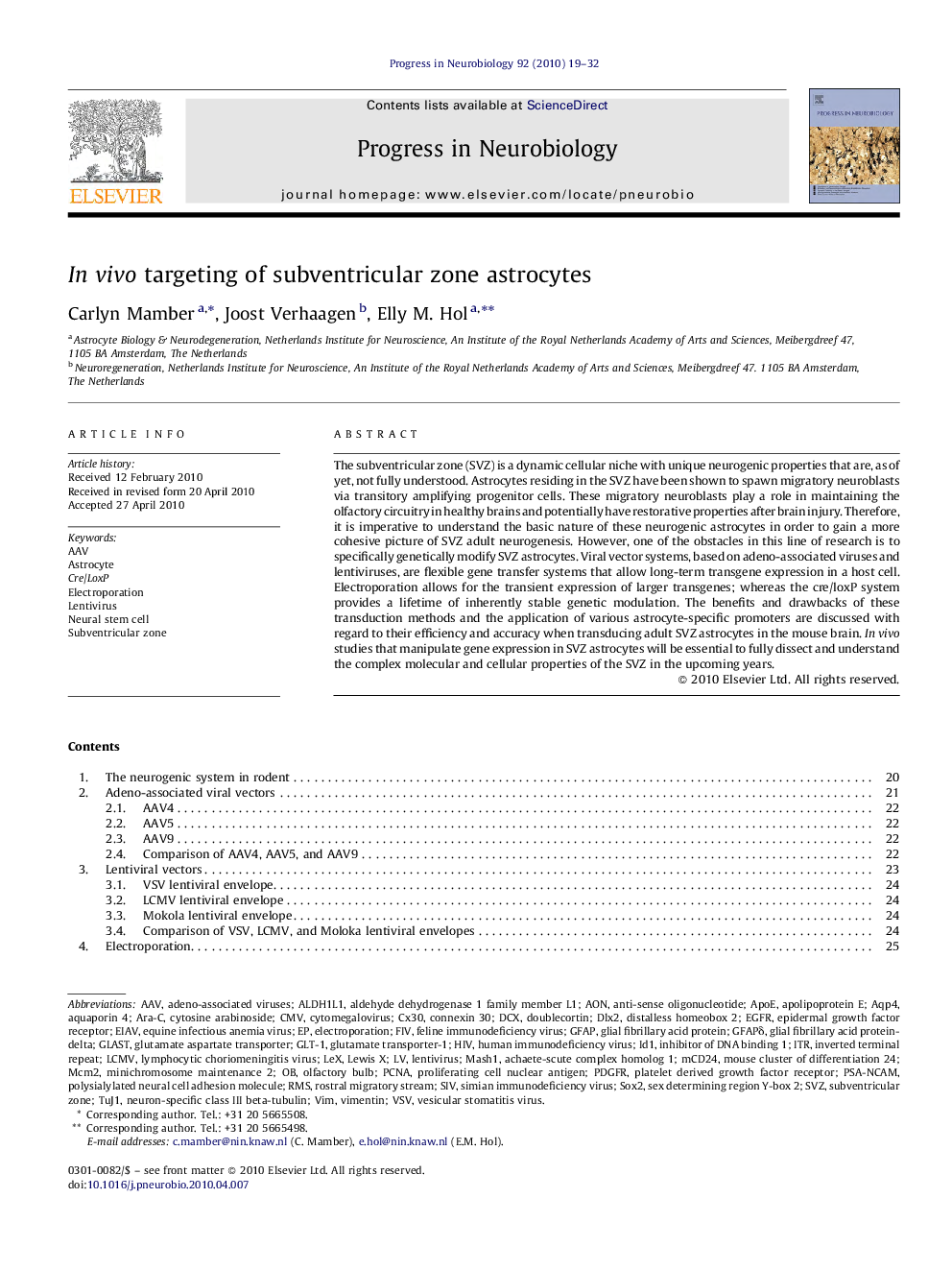| Article ID | Journal | Published Year | Pages | File Type |
|---|---|---|---|---|
| 4353540 | Progress in Neurobiology | 2010 | 14 Pages |
The subventricular zone (SVZ) is a dynamic cellular niche with unique neurogenic properties that are, as of yet, not fully understood. Astrocytes residing in the SVZ have been shown to spawn migratory neuroblasts via transitory amplifying progenitor cells. These migratory neuroblasts play a role in maintaining the olfactory circuitry in healthy brains and potentially have restorative properties after brain injury. Therefore, it is imperative to understand the basic nature of these neurogenic astrocytes in order to gain a more cohesive picture of SVZ adult neurogenesis. However, one of the obstacles in this line of research is to specifically genetically modify SVZ astrocytes. Viral vector systems, based on adeno-associated viruses and lentiviruses, are flexible gene transfer systems that allow long-term transgene expression in a host cell. Electroporation allows for the transient expression of larger transgenes; whereas the cre/loxP system provides a lifetime of inherently stable genetic modulation. The benefits and drawbacks of these transduction methods and the application of various astrocyte-specific promoters are discussed with regard to their efficiency and accuracy when transducing adult SVZ astrocytes in the mouse brain. In vivo studies that manipulate gene expression in SVZ astrocytes will be essential to fully dissect and understand the complex molecular and cellular properties of the SVZ in the upcoming years.
